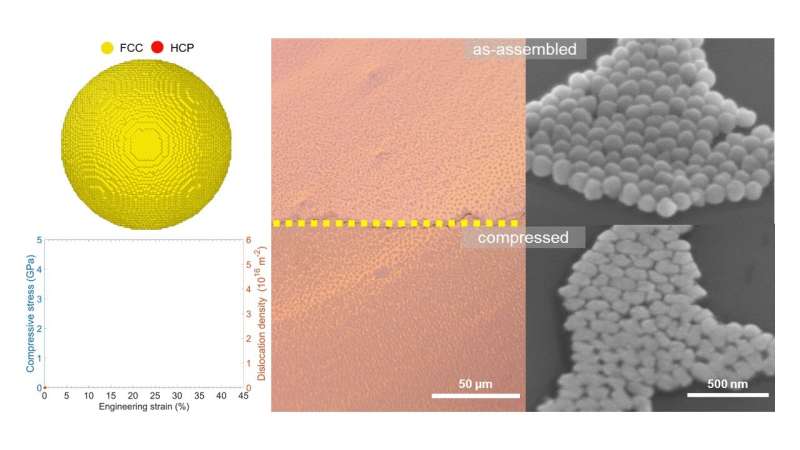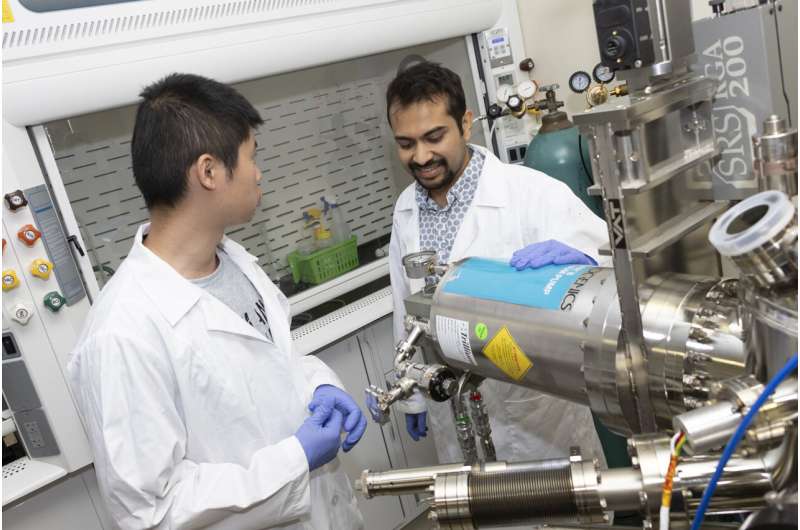This article has been reviewed according to Science X's editorial process and policies. Editors have highlighted the following attributes while ensuring the content's credibility:
fact-checked
peer-reviewed publication
trusted source
proofread
Gilded mysteries unveiled: Ancient art meets nanotechnology in nanoscale goldbeating

Goldbeating, an age-old craft pioneered by ancient Egyptian artisans more than five millennia ago, involves the meticulous thinning of bulk gold into gossamer-like leaves. Throughout history, this intricate process has adorned various masterpieces, such as the tombs of Thebes and Saqqara, and has cemented its place in art and adornments across cultures.
Today, nanoscale gold is used not only for decorating fancy desserts, but is indispensable for modern applications ranging from microelectronics to nanomedicine.
Bridging the gap between ancient arts and modern technology, researchers from the University of South Florida, Clemson University, and the University of Illinois at Urbana-Champaign have discovered that even nanoscopic gold ingots can be compressed into 2D leaf forms, replicating the ancient process of goldbeating, but at the nanoscale.
"We were intrigued by the idea of borrowing ancient craft for modern nanomanufacturing processes," said researcher Michael Cai Wang, assistant professor of Mechanical Engineering at USF. "The ability to fabricate 2D thin films from nanoparticles opens up new frontiers in nanotechnology and materials science, as we further pursue green ways to engineer gold at USF."
The researchers' recently published article in PNAS Nexus, "Nanoscale Goldbeating: Solid-State Transformation of 0D and 1D Gold Nanoparticles to Anisotropic 2D Morphologies," explores and offers insights into the world of nanoscale metallic deformation and 2D leaf formation. The understanding gained from this study can lead to the development of a broad palette of nanocrystals and nanometals, paving the way for exciting future applications in renewable energy, quantum computing, and nanomedicine.

"The inception of this solid-state 2D transformation technique is merely the starting point. Its versatility extends beyond gold, making it applicable to a diverse array of materials," said Md Rubayat-E Tanjil, a USF doctoral candidate in Mechanical Engineering and a first author on this paper. "As we share our findings with the scientific community, we eagerly anticipate advancing our understanding of nanoscale metallic deformation and unveiling new science."
The study revealed that the induced 2D morphologies of the gold leaves were dependent on various factors, including the precursor nanoparticles' original shape, size, and ordering before their compression. Because of the malleability of gold, this nanomanufacturing technique has the potential to precisely control the 2D gold leaf's shape, lateral size, and thickness, opening up new avenues in diverse applications.
"The effort we put in towards achieving uniform large-area compression of nanocrystals paid off in the end," said Keegan Suero, a Mechanical Engineering junior and USF S-STEM Scholar who has been working in Wang's lab throughout his undergraduate studies. "I am thrilled to be a part of this remarkable endeavor, and, of course, there is a wealth of science yet to be unearthed."
With the convergence of ancient artistry and nanotechnology, this study not only expands our understanding of nanoscale materials but also showcases the timeless appeal of gold and its significance in shaping our past, present, and future.
More information: Md Rubayat-E Tanjil et al, Nanoscale goldbeating: Solid-state transformation of 0D and 1D gold nanoparticles to anisotropic 2D morphologies, PNAS Nexus (2023). DOI: 10.1093/pnasnexus/pgad267
Journal information: PNAS Nexus
Provided by University of South Florida





















